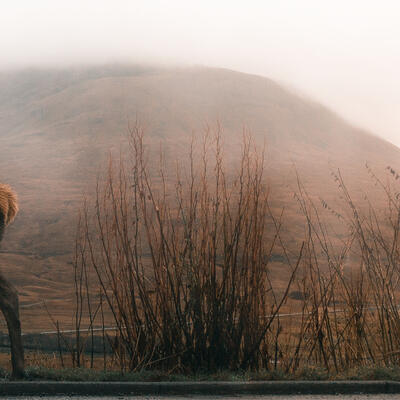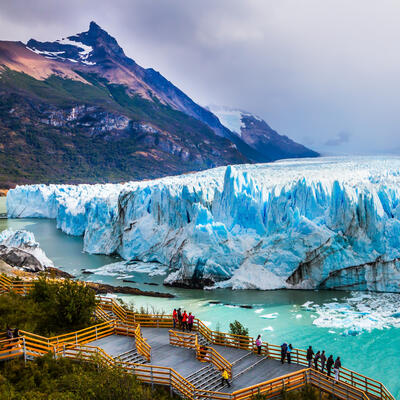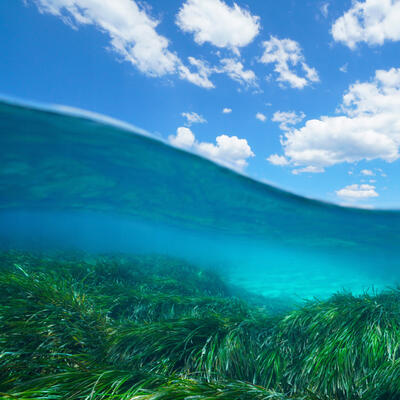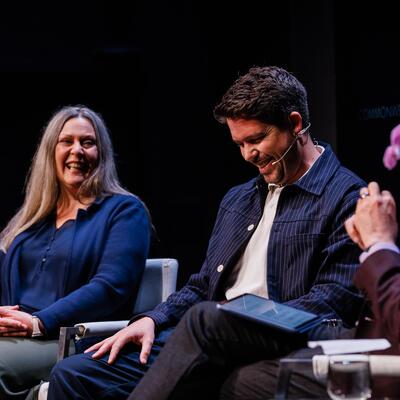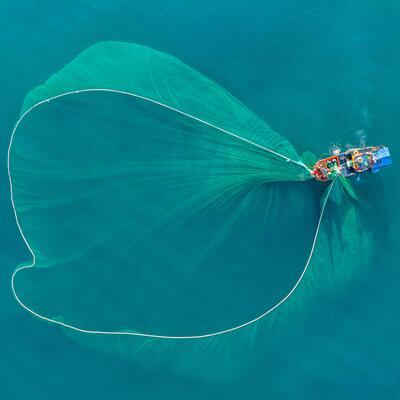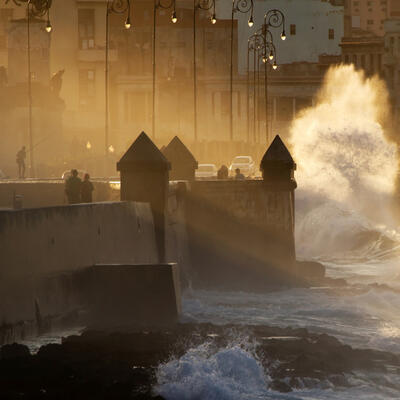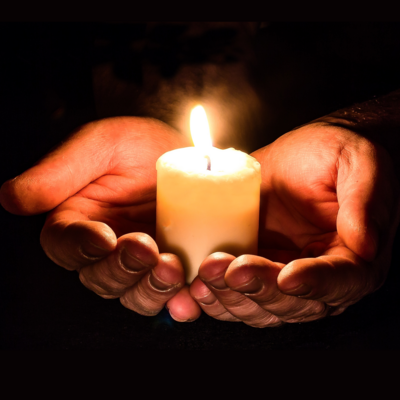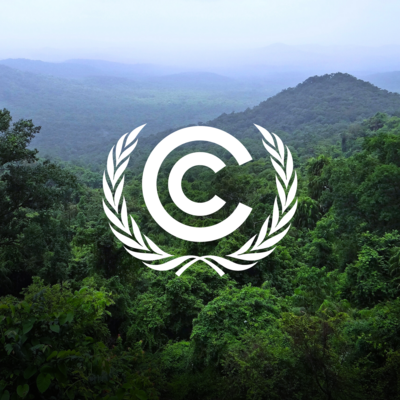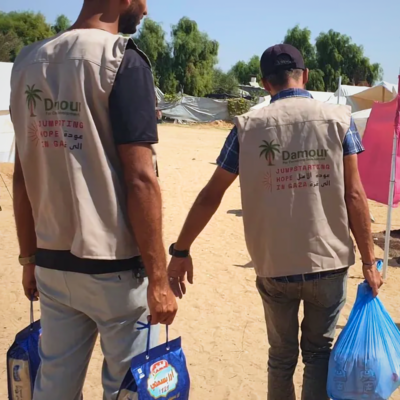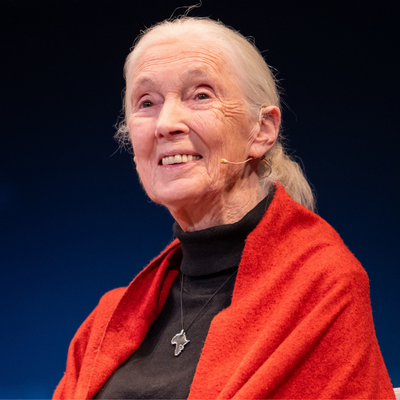
Bringing Biodiversity Back from the Breaking Point
Guests
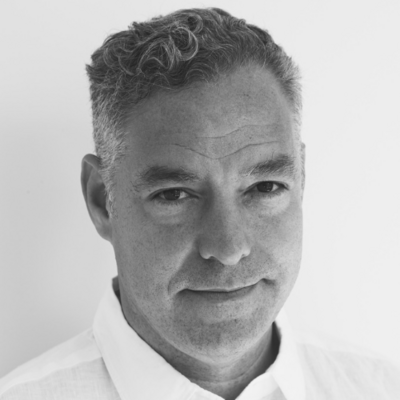
Ian Urbina
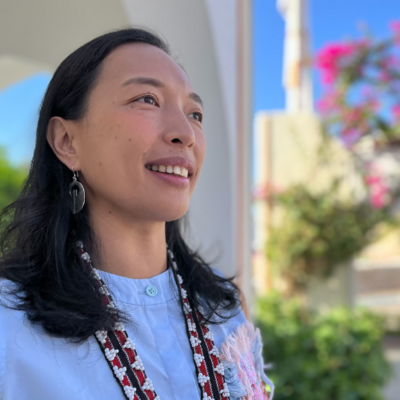
Jennifer Tauli Corpuz
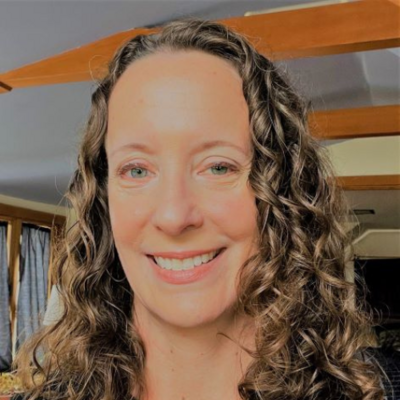
Tanya Sanerib
Summary
Land use, pollution and the climate crisis are driving what may be the largest mass extinction event since the dinosaurs. The World Wildlife Fund estimates that the planet has seen an average 68% drop in mammal, bird, fish, reptile and amphibian populations since 1970. In order to help address species collapse, over 190 countries – signatories to the United Nations Framework Convention on Biodiversity – recently agreed to an ambitious new plan, called 30x30, which aims to conserve 30% of the world’s land and waters by 2030. Will the framework be enough to bring biodiversity back from the breaking point?
This episode is supported in part by the Resources Legacy Fund.
Episode Highlights
2:52 Tanya Sanerib on the Kunming-Montréal Global Biodiversity Framework
6:57 Tanya Sanerib on how mussels saved an ecosystem
23:01 Jennifer Tauli Corpuz on the Kunming-Montréal Global Biodiversity Framework
23:36 Jennifer Tauli Corpuz on the role of Indigenous people protecting biodiversity
36:47 Jennifer Tauli Corpuz on how her experiences influence her current work
39:01 Ian Urbina on the lawless high seas
49:45 Ian Urbina on a success in Brazil
Resources From This Episode (4)
Full Transcript
Note: Transcripts are generated using a combination of automated software and human transcribers and may contain errors. Please check the actual audio before quoting it.
Bringing Biodiversity Back from the Breaking Point
Greg Dalton: This is Climate One. I’m Greg Dalton.
Ariana Brocious: And I’m Ariana Brocious.
Greg Dalton: In the midst of the climate emergency, the world is facing a connected crisis: the stunning loss of biodiversity – the variety of living things on the planet.
Ariana Brocious: The World Wildlife Fund estimates that we’ve seen an average 68% drop in mammal, bird, fish, reptile, and amphibian populations since 1970. In some areas it's worse: Latin America and the Caribbean have seen a mind boggling 94% drop in biodiversity in that same time period.
Jennifer Tauli Corpuz: A million species are at risk of going extinct. And if you don't do anything about that then we are in trouble.
Greg Dalton: That’s Jing Tauli Corpuz. Later in this episode, we’ll hear my conversation with her about indigenous representation in efforts to reverse biodiversity loss.
Ariana Brocious: Taking stock of how many species we’ve already lost is really depressing. Especially because we know what’s causing it–and most of the causes point back to us, to humans.
Greg Dalton: Indeed. Some people might wonder why humans should care if some exotic insect they’ve never heard of goes extinct. Well, extinctions are like rivets in an airplane. A few can go bust or rust and the plane can still fly. But at some point the aircraft is going to be compromised and eventually crash. That’s how it is with bees that pollinate our food and forests that filter our water.
Ariana Brocious: Right. The main causes are changes to land and sea use – like clear cutting rainforests and converting complex ecosystems into monocultures and rangeland for beef. That leads to habitat loss, which is increasingly compounded by climate disruption.
Greg Dalton: The United Nations says that the climate crisis will become the driving factor in biodiversity loss in the coming decades.
Ariana Brocious: In order to help address species collapse, over 190 countries – signatories to the United Nations Framework Convention on Biodiversity – recently agreed to a new plan, called 30x30, which aims to conserve 30% of the world’s land and waters by 2030.
Greg Dalton: Tanya Sanerib is International Legal Director at the Center for Biological Diversity.
Tanya Sanerib: Conserving 30% of our habitat and our oceans is gonna provide amazing mitigating impacts, not just for biodiversity loss but also for climate.
Ariana Brocious: Right now, around 17% of land on the planet is protected, so going to 30% in under a decade is an ambitious goal.
Greg Dalton: And a quick note: This episode is supported in part by Resources Legacy Fund. Now, Let’s hear my conversation with Tanya Sanerib about the connections between climate disruption and biodiversity loss.
Tanya Sanerib: just as these two crises can have compounding impacts. The solutions, particularly when it comes to addressing habitat loss and conserving 30% of our habitat and our oceans is gonna provide amazing mitigating impacts, not just for biodiversity loss but also for climate, particularly if we really focus on protecting areas that are rich in biodiversity and also rich in carbon. So, a scientist talks about this. When we’re talking about sort of carbon rich, biodiversity rich ecosystems we’re really thinking about places like forests and wetlands and peatlands, some grasslands and savannas, coastal ecosystems as well. Mangroves, salt marshes then we get into oceans and kelp forest and seagrasses, and we have some deepwater and polar blue carbon habitat. So, that's really what we’re talking about. There's a number of places globally, sort of six priority areas that really are carbon rich biodiverse rich that we want to talk about protecting. I think most of us know the first one, right, it leaps to mind it's the Amazon. And that's a really crucial area in terms of being able to sequester carbon, but also to protect an enormous amount of biodiversity. Likewise, we have amazing rainforest ecosystems in Central and West Africa and lots of other areas in the world. Those rainforests are really going to be a crucial part to how we mitigate climate impacts because of their ability to sequester carbon. It turns out that these forests are also home to a critically endangered species. The forest elephant. Unfortunately, like all elephants in Africa, forest elephants have had their populations tremendously impacted by poaching for their ivory tasks. And for that reason, they are critically endangered species. If we were to lose forest elephants, it turns out that the ecosystems they come from would lose somewhere between 6 to 9% of their ability to capture atmospheric carbon.
Greg Dalton: So, explain for me how an elephant helps a forest be more healthy and capture more carbon.
Tanya Sanerib: Yeah, it doesn't really seem intuitive. But it turns out that forest elephants are phenomenal gardeners. So, by consuming biomass they plant the forest with high carbon density trees. They do that by consuming biomass and defecating it out. So, they give tree species sort of that best shot at life by having seeds that are placed in a really nutrient-rich environment to start off their lives. At the same time elephants are phenomenal at weeding the forest. So, they go in and remove a lot of the lower carbon density trees and undergrowth that helps those high carbon density trees have the space that they need to really survive, thrive and take up lots of carbon.
Greg Dalton: So, elephants take weeds and turn them into fertilizer through their poop that then fuels the growth of trees that absorb lots of carbon.
Tanya Sanerib: Absolutely. And so, that's one of the ways when we sort of think about carbon rich and biodiversity rich ecosystems. We need to stop thinking just about, oh, yeah, it's a rainforest. It has amazing trees. We need to save that. We have to think about all those component parts because we’re just starting to understand the really crucial role in the connectivity between all the species that evolved in some of these ecosystems and how that really helps them not only in terms of maintaining biodiversity, but in terms of mitigating climate change impacts as well.
Greg Dalton: When people mention biodiversity they often think about some funny looking creature far away that I will never see and don't really know what function it performs. Why should we care about those species?
Tanya Sanerib: Well, it turns out that a lot of the amazing weirdos that are part of our biodiversity are also just as crucial for saving our ecosystems. And so, another good example is the Ohio River Basin and freshwater mussel species. So, this freshwater mussel is called the purple catspaw pearly mussel. And I have to say mussels, hands down, have the most amazing names probably of any species on the planet. We propagated that species in captivity and reintroduced it into the wild. And the results were phenomenal. So, freshwater mussels are really important because they filter water and improve water quality. So, you immediately have that benefit in the ecosystem. But they also serve as an important food source. And so, you start to see fish otters and freshwater turtles returning when they get their food source. The other thing that freshwater mussels do is they provide as their populations grow they stabilize streambanks. And that provides the opportunity for regrowth of riparian vegetation and that starts to provide habitat for birds, provide shade for amphibians. It provides opportunities for other fish species to come back to the stream areas. And so, you have mussels that come into this ecosystem that were on the verge of extinction. They get reintroduced and you see a complete resurgence in the ecosystem. They're not the charismatic elephants, right? But this tiny little species played this crucial role in basically renewing an entire ecosystem.
Greg Dalton: So, knowing that mussels perform that filtering cleaning function. Do you eat mussels? Should people eat mussels?
Tanya Sanerib: You know, it's an interesting question. And I think one of the things that people who study biodiversity have learned is sometimes it is our connection to a species, whether it's something that we like as a food source or it's a native plant that we like growing in our gardens. That human connection, that understanding of that thing for example, salmon, for us in the Pacific Northwest people love eating it, and as a result we care a lot more about conserving it, than perhaps we would if we didn't care about having it as a food source, right. I mean, salmon, I think are spectacular amazing stories, their life story is unbelievable. how they feed so many species when they return to spawn. How their carcasses get pulled inland and they feed the forest. And through that understanding that sort of link of eating those fish we come to understand the entire benefits that they provide to an ecosystem. Now, that said, we have so many people on the planet that we can’t all consume wildlife in that manner,
Greg Dalton: So, one central idea behind 30 by 30 is that if we protect land and water, nature will rebound in ways you just mentioned. And you also mention food production. So, how do we feed nine, 10 billion people? What change needs to happen to our industrial food system to meet these 30 by 30 conservation goals. Is there a collision between food productivity and conservation?
Tanya Sanerib: I think right now there absolutely is. One of the big things that we have to address in the biodiversity crisis is how we transition to conserving 30% of our lands in a way that accounts for indigenous people and also focuses on livelihoods. And how we transition agriculture away from industrial systems to much smaller systems that have pathways for migration, pathways and borders and areas that provide protection for biodiversity that will benefit both the planet as well as the crops that are being grown on a smaller scale. We’re really looking at livelihoods returning to communities and providing benefits for local people rather than for large industries. But that's gonna take a lot of work on our part and it's gonna take a lot of work economically in terms of rejiggering how we handle subsidies. Because right now we have a tremendous amount of subsidies that go to agriculture that are incredibly harmful for biodiversity.
Greg Dalton: So, we have this big agreement that you say is a big deal. The Biden administration has committed to its own 30 by 30 plan But the US did not sign on to the UN agreement. Why not?
Tanya Sanerib: Yeah. So, the United States is not a party to the convention on biological diversity. And that's because our Senate has failed to ratify that convention. And large part that is a result of what I would say is the third pillar of that agreement, which is the equitable sharing of nature's benefits. That sounds nice but boil it down into a capitalist system and that means that big pharmaceutical companies that have taken samples of nature from all over the world, created drugs that they make tremendous profits off of would need to share those benefits back to the countries that they came from. And as a result, they've done a phenomenal job of keeping the United States out of joining the convention on biological diversity. Not having us have that seat at the table can really diminish our ability to also talk about solutions, right. I think that there is a recognition that because of our oversize role, we need to do a lot in terms of contributing resources. Funding is huge a issue; it held up negotiations on adopting this UN biodiversity framework, you know, until two in the morning on the last day, right. I mean, you know, and you see that happen all the time in climate negotiations as well. Not having the US have that really firm seat at the table, you know, that changes the dynamic there. But also, in terms of transferring technology and building capacity. Those are really crucial things that the United States also needs to be doing when we get back to the question of equity. How do we make sure that we’re actually really making up for historically and currently what we’re consuming? One thing that is really interesting about the text of the UN Biodiversity Agreement is a very important recognition of the role of indigenous peoples in particular trying to attain the 30 by 30 goal. So, that target itself recognizes the rights of indigenous peoples. It says we have to ensure is we engage in this exercise that we ensure there's prior informed consent. So, while we are simultaneously talking about getting destructive human activities out of areas that are important for biodiversity conservation. We’re simultaneously recognizing that indigenous peoples have a long history of protecting biodiversity. And that they may do it in ways that are slightly different from some Western concepts. But that does get into larger questions around the UN Biodiversity Framework around equity, right. As in climate you, you all talk about common but differentiated responsibilities respective capabilities, right. That's been a big part of the discussions.
Greg Dalton: Which means, basically means that rich countries created the problem they have to do more to solve it. The people who did very little don’t, can't be expected to share equally in the solution.
Tanya Sanerib: Absolutely. And unfortunately, those people who didn't create the problem are the ones who are suffering the consequences first, right. So, there's really equity sort of on both sides, unfortunately. And we have the same problem when it comes to biodiversity. If you look at the United States, for example, to get to our place socio economically we have awful history of colonization of slavery tremendous use of natural resources to acquire our status globally. At the same time, we now have pretty phenomenal environmental laws from a global standpoint and in terms of protecting biodiversity trying to ensure species don't go extinct in our country. We have a great Endangered Species Act, but what we don't account for is the fact that we export our extinction footprint to other countries. We consume a tremendous amount of biodiversity from other countries. We import all sorts of crazy things, Greg, from kangaroo leather shoes, bats encased in plastic from China, primate skulls from southeast Asia. All sorts of luxury goods made from wildlife that fueled the biodiversity crisis. And we don't really take into account the fact that we have these ramifications in other parts of the world.
Greg Dalton: And right now we have a moment in the climate conversation where there’s a movement to electrify everything and to get away from extracting coal and oil and burning it and to use the sun and the wind. But to do that requires a lot of copper wires, a lot of lithium for UV batteries. That is extraction that happens in the Global South. So, is there a collision course between electrify everything to get away from fossil fuels and protecting these resource rich areas in the Global South that are the kinds of ecosystems you want to protect.
Tanya Sanerib: You know that has been a traditionally thorny issue, right, when we come to talk about how do we solve these two crises together. And I think what’s really exciting is my organization along with 290 other entities indigenous peoples front-line communities, environmental justice groups just sent a letter to Congress and the administration that's accompanied with a positive policy briefing called “pursuing a just and renewable energy system” that maps out how the United States can scale up renewables and get off fossil fuels and do it in a way that isn't going to cause that sort of surgence both in terms of how we cite renewables and then also how we get the materials needed to upscale renewables. And so, let's talk about that a little bit because this is the kind of creative thinking that I think the UN scientists, both in the climate and biodiversity spheres, are talking about when they talk about transformative change. We have to get creative and rethink the systems. And part of I'm not gonna pull my punches here, part of this means we have to drastically change mass transit in this country, right. We have to decarbonize transportation because if we truly want to not wreak havoc on biodiversity and mining for some of these essential minerals, we need for renewables then we’re gonna have to change some of the things in our country that are not sustainable. So, when we think about producing lithium, and the report really gets into this, we need to invest in mass transit. We need to limit battery size. We need to increase city density. Limit suburban sprawl. So, you’re really condensing people, making it easier for them to move around in ways that aren't car dependent, right. And then think about robust recycling programs. That’s something we are absolutely terrible about in the United States. We have this expendable you know budget and you know, rather than fixing something we’re going to toss it and get a new one. And by toss it, I don't mean recycle it. A lot of times these are things that are going to landfills. So, we absolutely can take a whole of supply-chain approach to decarbonizing the transportation system.
Greg Dalton: The Biden administration right now is trying to onshore reshore manufacturing but some environmentalists like no we don't want that factory here that lithium mine in Nevada. We’d rather have it be somewhere else in another country where we don’t see it.
Tanya Sanerib: Yeah. And, you know, the thing is, if we actually change what we need and we conserve resources more and we recycle more that factory doesn’t have to go anywhere, right. And that’s the kind of transformative thinking that we need to start talking about. We can’t just say, oh, we have the system, how do we make it work for renewables. What we have to talk about is how do we reform the system so we’re gonna have a livable future. And I want to talk a little bit about the siting side of things, right, because that's the other big conflict. When we get into renewables there's this really big concern on the part of environmentalists and on the part of front-line communities that we’re talking about. You know, destroying biodiversity, destroying communities with solar panels and siting of renewables in ways that are going to be really detrimental to biodiversity and to justice communities. And the other component of this that I thought was really interesting because we identify three ways that we can upscale renewables to meet our energy demands. And we don't have to actually degrade places where communities live or biodiversity. So, the first thing is and I'm sure you've heard this before because people do say this a lot but you know we need to do the large-scale renewables on built environments. So, we have to be looking at parking lots, at canals, rights-of-way of highways and degraded lands that already have access to existing transmission lines that aren’t gonna impact communities and biodiversity. But we have to couple that with two other things. And I think this is again where we get into creativity. We really need to be thinking about microgrids and we need to make sure that we’re producing energy where it gets to use. And so, that means we’re putting solar panel on everyone's home.
Greg Dalton: Some electrical people would say that rooftop solar cost more than industrial utility scale solar. And that makes it a lead unless affordable, etc. so that brings in equity question. This is a really naughty gnarly puzzle to solve.
Tanya Sanerib: Absolutely, absolutely. But the other component of it is, of course, we have to change how we live our lives too, right. There's a major conservation impact here. We have to think about weatherizing all of our structures, our homes to our offices. You know we want to get off of fossil fuels transition to heat pumps. There's a lot of things that we can do in terms of changing how we live our lives. And really changing from sort of, you know, the fast fashion culture that we have right now in the United States to a more circular economy where we think about the long-term impacts of everything that we buy. We make sure that everything that we acquire is going to be something that can be recycled, composted, reused down the road. And having that shift and that means a major change in our consumption patterns and we need that both in terms of addressing the climate crisis but also in terms of the biodiversity crisis, right. Those kangaroo leather shoes you don't need those, you know, leave them for the kangaroos,
Greg Dalton: Tanya, thank you so much for sharing your insights and your enthusiasm about biodiversity with us today.
Tanya Sanerib: I was happy to be here. Thank you.
Greg Dalton: You’re listening to a Climate One conversation about saving and restoring our planet's biodiversity. Our podcasts typically contain extra content beyond what’s heard on the radio. If you missed a previous episode, or want to hear more of Climate One’s empowering conversations, subscribe to our podcast wherever you get your pods. We have a brand-new website that makes it easy to share specific episodes or even whole playlists on topics including food, energy, justice, and much more. Check it out at climate one dot org and if you liked today’s episode, share it with a friend. Coming up, how a different relationship with our environment could lead to better human behavior.
Jennifer Tauli Corpuz: For indigenous peoples, we regard ourselves as rich, if we are able to maintain a healthy relationship with nature.
Greg Dalton: That’s up next, when Climate One continues.
Greg Dalton: This is Climate One. I’m Greg Dalton.
In 2022, The Kunming-Montréal Global Biodiversity Framework was adopted at the UN Biodiversity Conference in Montréal. Over 190 nations who are part of the Convention on Biological Diversity – or CBD – agreed to the goal of conserving 30% of land and water by 2030. The United States and The Vatican are the only holdouts. Numerous studies show Indigenous people have a disproportionately positive impact on maintaining habitat and species health. Jing Tauli Corpuz is from the Kankana-ey Igorot People in the Philippines, and is Managing Director of Policy and advocacy Lead for Nia Tero. She says the Kunming-Montréal Global Biodiversity Framework is crucial.
Jennifer Tauli Corpuz: it's meant to stop the sixth great extinction. And, you know, a million species are at risk of going extinct. And if you don't do anything about that then we are in trouble. The bees are going to disappear and we won't have any crops anything to eat if the bees are gone, right. So, yeah, it’s quite significant. It's important.
Greg Dalton: And what's the role of indigenous people and saving the bees and the other biodiversity that helps the food we eat, and lot of the economy.
Jennifer Tauli Corpuz: Going into the negotiations, what the CBD did was to conduct studies on where biodiversity is found currently. And one of the discoveries in the global assessment on biodiversity on ecosystem services is that biodiversity is declining everywhere. However, it is declining at a much slower rate in indigenous peoples’ territories. Indigenous peoples and local communities’ territories. And so, it was quite clear that in places governed by indigenous peoples whether it was covered by protected areas or not, biodiversity was thriving. And so, they couldn’t escape acknowledging the role of indigenous peoples because obviously we’re the best guardians of nature as shown by the scientific studies that were conducted before the negotiations.
Greg Dalton: But some people might think that, okay, indigenous people are good stewards of land. They also have a less developed, I don’t know, lower standard of living. So, does that, the stewarding lands like indigenous people mean a lower material standard of living?
Jennifer Tauli Corpuz: That’s a very Western point of view. In the current mainstream view, no? The way to measure success is through the GDP. The income per person in a country. However, for indigenous peoples the way that you measure poverty and the way that you measure progress is quite different. I'll give you an example. In one of our partner countries in Vanuatu they try to determine indicators of Melanesian well-being. So, that’s how indigenous peoples measure their well-being. And the result is that people there valued the ability to practice rituals. The ability to access land and resources and the ability to speak an indigenous language. So, in short, it's not the income that matters. It’s the way that indigenous people maintain their relationship with nature that matters. So, it may be primitive in one way of measuring things, but for indigenous peoples, we regard ourselves as rich, if we are able to maintain a healthy relationship with nature.
Greg Dalton: Sure. Well, we know that lots of capitalistic societies have lots of material wealth and not so much health and anxiety, you know, or things don't necessarily make us happy or healthy. Last year at the UN Climate Conference in Egypt, I spoke with Johnson Cerda, a Quechua from the Ecuador and Amazon, and he expressed some frustration over the fact that indigenous people, while they're increasingly included in the conversations, they aren't recognized at the same level as governments that are members of the United Nations, which is built on nation states. So do you feel you had a voice at the UN Biodiversity conferences, even though you're not representing a nation state?
Jennifer Tauli Corpuz: Well, the Biodiversity Conference is a bit more open I think than how they do things in the climate space. Because in the biodiversity space almost all of the meetings are open and accessible for indigenous peoples. This is not the same in the climate space. Almost all of the meetings there are closed. And although they did establish a local communities and indigenous people's platform at the moment it's not clear to what extent the discussions in that platform are able to influence the actual negotiations of the climate convention. That's why the demand from indigenous peoples is for recognition of indigenous peoples as nations at par with the countries. Because if you look at indigenous societies, we are nations, we have people, we have a territory. We have a government. We have customary governance rules. We have a governance structure. And so, if you look at the definition of our country or a nation. Most indigenous peoples would qualify.
Greg Dalton: And there’s definitely more inclusion and recognition talk about including indigenous people in these conversations at all levels, even including the United States regarding Colorado River, internationally, in this biodiversity convention. Yet for centuries, colonial powers have exploited indigenous peoples on their land and then promise to make amends. Do you see anything different this time around?
Jennifer Tauli Corpuz: One strand of debate or one strand of discussion during the negotiations for the Global Biodiversity Framework was the colonial legacy of conservation. The way that the United States was obtained or colonized from the Native Americans, you know, it’s like a caricature, you know, land in exchange for trinkets. But the truth is it’s still happening nowadays. Colonization is alive and well, especially in the climate and in the biodiversity spaces. The idea of fortress conservation is a very colonial legacy. The idea that you have to eject people from land in order to keep healthy. When in fact we are seeing more and more evidence that in places occupied by indigenous peoples in fact, they have been carefully managing their territory for centuries. Deep in the Amazon, they discovered evidence of agriculture, of fertilizing the soil through ashes. So, yeah, the colonial legacy is there, but we're trying to subvert the legacy. And in the biodiversity space that’s why the Kunming-Montréal Global Biodiversity Framework is such a breakthrough, because it recognized that there are places that are well-managed by people who live close to nature. So, yeah, there’s definitely still colonial legacies, but we’re trying to change that.
Greg Dalton: One way to change that is not have this fortress conservation which is, you know, get all the people off the land and preserve it. Which as you say this colonial legacy and that the Global Biodiversity Framework is a good basis for walking hand-in-hand with indigenous people. What measures are in place to ensure that will be implemented different this time?
Jennifer Tauli Corpuz: I'll take Target 3 or 30 by 30 as an example. In the previous incarnation of that target, it was called Target 11 and it's the area-based conservation target. And there was only one small word to make sure that violations of indigenous peoples’ rights don't occur and that there's an opportunity for indigenous peoples to access partners. And that word was equity. And obviously, it wasn't enough; it wasn't a sufficient safeguard to prevent violations of indigenous peoples’ rights. So, now we made it a point in Target 3 to ask for three main inclusions in the language. The first is to make sure that indigenous peoples are able to consent before protected areas are established over their territories. The second is to recognize the government system of indigenous peoples as a governance system that is good for biodiversity. And the last one is to recognize the need to partner with indigenous peoples if implementation of the target is to be successful. And that's why we now have recognizing indigenous and traditional territories in the language. We have governance in there and we have the need to recognize the rights of indigenous peoples at the tail end of the target.
Greg Dalton: The climate effort and the biodiversity effort are connected and somewhat different. We have these big international efforts to address both things. Sometimes there's tension between the climate goals and the biodiversity goals. For example, electrifying homes in the economy means getting all fossil fuels; it also means mining for copper and lithium which are often located in indigenous areas in the Global South. So, how do you see the tension between the climate goals and biodiversity?
Jennifer Tauli Corpuz: Well, yeah, you know what first of all, it's really incredible for me that it was only in COP 26 in 2022 that the linkage between nature and culture was recognized in a formal resolution or a formal decision of the climate change conference. So, that was incredible for us as indigenous peoples because when we govern our territories on the ground, we don't identify whether one particular action is contributing to biodiversity. And, you know, whether the other actions are contributing to the climate mitigation. So, it’s all the same governance actions on the ground. So, for us it's very clear there's a link between biodiversity and climate change. However, there are risks in the way that we designed the solutions. Which is why one of the things that the indigenous movement has set is that we have contributed the least to biodiversity loss and to climate change and global warming, and yet we stand to suffer the most because we are in the frontlines. And at the same time in the proposed solutions our rights are also at risk. One example is if you think about climate solutions without considering biodiversity, planting monoculture trees, monoculture plantations, it meets the goals of the climate convention because the more trees the better. But then you ignore the need for diversity in a certain forest in a certain area. And then what you mentioned about the mining for transition minerals is also a risk that we face in the course of implementing solutions to the climate crisis. Most of the minerals that need to be used for electric vehicles, they are found in indigenous lands. And what we're finding nowadays is that mining for transition minerals you know because of the social need and the need, well, in general, the need for those minerals, the safeguards for indigenous peoples and indigenous people’s rights tend to be ignored.
Greg Dalton: I've noticed that some environmental organizations, even state governments like California, are paying more attention now to indigenous practices because fires are burning throughout the American West. And like indigenous people have used fire as a tool in long history of better management of forest. One organization I know to protect forest recently brought on the first indigenous person to be on their board. I thought, well, that’s kind of late but better late than never. How do you react to these organizations suddenly recognizing indigenous people after so long.
Jennifer Tauli Corpuz: Well, that’s exactly the reaction, right. Better late than never. I mean it's super late for organizations to be recognizing the role of indigenous peoples. However, better late than never. So, one of our partners in Australia, the Warddeken people, have been practicing cultural burning for thousands of years. And because of the problem with the wildfires now their skill those that practice cultural burning it’s now in demand. There's even a global alliance of savanna burning because, recognizing that indigenous peoples have a lot to contribute in that space. And the idea there is that cool burns, you know, burns during the cool season prevent bigger burns, wildfires during the dry season. And because of the close relationship of indigenous peoples with nature that’s something that we were able to notice and practice early on. And so, you know, it's better late than never. There's now recognition of cultural burning. There's also recognition of indigenous guardians. And now there are many, many organizations that are scrambling to include indigenous peoples in their staff in their board, their decision-making structures because well, one part is because a lot of the pledges for funding are to indigenous peoples. And the second thing, the less cynical point of view is that we need to tap into indigenous knowledge in order to make sure that we’re designing solutions correctly.
Greg Dalton: Yeah, a little bit of that, oh, we need that knowledge now because we’re in trouble. Or we might get some money from it by including you. You’ve talked about being able to swim in the local river when you were four with your three-year-old brother without your parents, which as a parent terrifies me. But you said the whole community was there to watch out for you. How do you think that influenced your approach to the work you do today?
Jennifer Tauli Corpuz: The lesson from that experience for me is the need to respect collective power. And just respecting that people when they work collectively and when they govern themselves collectively and so forth. they have power but also at the same time they have solutions. Because of this idea that we have to move together as one. We have to make sure that no single entity within the collective is accumulating more than their share. And, you know, and that decisions are taken also collectively. So, that was an important lesson for me and it's guiding me in my work now. The respect for the collective and the need to recognize that indigenous peoples as collectives are nations. They have their own rules and laws, customary law. And that they have their own ways of deciding on things, including matters of justice, matters of criminal law. Matters of how to use resources but also deciding whether extractive industries can enter the community or not.
Greg Dalton: Thank you so much, Jing, for sharing your story and insights on biodiversity.
Jennifer Tauli Corpuz: Thanks so much, Greg.
Ariana Brocious: You're listening to a conversation about bringing biodiversity back from the brink. This is Climate One. Coming up, even with a framework in place to address biodiversity loss, how can regulations be enforced where no national authority exists?
Ian Urbina: The high seas is this crazy thorny place where no one really feels they have the jurisdiction nor do they want to put up the money doing anything about it.
Ariana Brocious: That’s up next, when Climate One continues.
Ariana Brocious: This is Climate One. I’m Ariana Brocious.
On land, countries and governments can enact regulations to help slow the trajectory of biodiversity loss. But there are huge parts of the ocean that fall under no national jurisdiction, complicating efforts to preserve fishing and marine biodiversity. We talked about this with Ian Urbina, author of The Outlaw Ocean and Director and Founder of The Outlaw Ocean Project.
Ian Urbina: the high seas, which is that realm beyond national waters. It's a realm defined by a lack of government control. No one country owns it, but it belongs to everyone. The end result is that you can go out there and do largely as you please even if there are rules that apply to that space. There are not cops, there are not police that enforce them. And so, that can be good and that can be bad, you know, but it's largely an ungoverned space and therefore the best and the worst of human nature manifest.
Ariana Brocious: You reported on all kinds of crimes that happen on the high seas from illegal fishing to illegal dumping to slavery and murder. What do you see as the main drivers of some of those crimes?
Ian Urbina: Money. You know, I think at the end of the day resources so broader than money. It's the competition for ever diminishing resources whether the resources are time, whether the resources are access to labor, the resources are oil and gas, or fish or permission to cross a certain terrain. These are all resources and there's competition for it. And that competition is what largely players to sometimes cut corners. Why obey that law that says you're not allowed to use that certain type of net because it's gonna kill baby fish and collapse the ocean biosphere? Why obey that law that says you're not allowed to go into that area of protected waters because if you do then it's gonna be harder for you to catch your quota. But if you don't, you can get home a week earlier.
Ariana Brocious: How has climate change and stresses on the oceans affected fisheries in ways that have also led to increased human desperation?
Ian Urbina: The combination of climate change and overfishing and illegal fishing, kind of is an evil trinity that has conspired to make it tougher to do the work of fishing. Because number one, climate change has resulted in many things including shifting water temperature. The shifting water temperature has cause of where fish go, how long they stay when they procreate, etc. And that has sewed unpredictability into the equation that fishermen are calculating as they decide where to go. How long they’ll be at sea, how much fuel they need, how can they break even. When you don't really know where the fish are headed over, they’re headed much further from shore to different countries' waters, etc. it becomes harder for you to survive. think overfishing also and climate change have caused a lot of the nearshore stocks to collapse. And so, the easier to catch fish are gone in many places in the world. And so, that means that fishing fleets have to go much further out and stay much longer and therefore come back with much less profit if any. Most of the high seas fishing fleets in the world are actually unprofitable were they not to have state subsidies. So, these things are intensifying competition.And climate change, you know, also has just made for more desperation on land. So,even when you can catch the fish and you bring it back to land your ability to sell it is much tougher just because of drought in many of these places and other instabilities that cause especially in motion developing world the market that they used to think was stable to no longer be.
Ariana Brocious: In December, the UN adopted what's known as the Kunming-Montréal Global Biodiversity Framework. This was largely held as a win for getting nations to agree to the goal of conserving 30% of land and water by 2030. With everything we’ve been discussing, how could restrictions on overfishing be enforced?
Ian Urbina: If we just look at overfishing on the high seas portion of the planet rather than the national waters, which is this other thorny area. there's some big things that could really move the ball downfield. One is ships should be seen. You know, in the post-9/11 era you can't fathom the notion of a 747 leaving from Boston heading to Taipei and going dark and not announcing when it’s leaving, where it's headed, keeping its transponder on while it’s in the route. Indicating to all the relevant party who is on board what are they carrying, you know, all that stuff is normalized in other industries, trains, trucks, airplanes. But distant water fishing vessels that are on the high seas have been allowed both legally and just culturally and in policy to operate by different set of rules. And going dark being invisible is normalized. That's crazy. You know that has to stop tomorrow. And the first way that we can actually have a chance of enforcing rules is making sure we know who the rule obeyer should be and where are they.
Ariana Brocious: And I would guess that part of the problem is just the scale of the ocean relative to human's ability to monitor it, right? I don't know if there's anything on the scale of like satellite monitoring or any kind of international force that could or could be created to do this or if that's even the way to go.
Ian Urbina: So, imagine these dots on the map they’re traversing the Big Blue and your game board, you know, challenge is how can you keep your eyes on those dots. Well, those dots, those ships, have information that you can either see them from space without their permission or not. Or you can force them to transpond so they have to keep their signal going, or both. And then the other place where you can apply pressure on them is when those guys come to shore, you can say, wait, you are dark for three weeks, we can’t take your stuff. You cannot possibly give us your stuff, we cannot unload those goods. And so, those are the three categorical ways that you would probably impose traceability on these carriers of goods, these extractors of goods.The most promise in my humble opinion is eyes in the sky without their permission. You know, we put up enough satellites and there are some folks pushing for this. Right now, there are satellites up there and you can see everything everywhere. But they cost a lot of money and you have, there’s also logistical challenges. And you, me or the relevant NGO doesn't have the price point access to that material; militaries do; governments do. So, that's got to change, it’s got to be sort of publicly available and accessible and you need a lot more satellites up there etc. etc. But that's probably the best chance because you don’t have to ask permission, we can see whether you want to be seen or not.
Ariana Brocious: And you mentioned that you know, airplanes can't really go dark and can't also just sort of arrive somewhere with a bunch of stuff and not say where it came from. So,how would that be handled
Ian Urbina: because the high seas is this crazy thorny place where no one really feels they have the jurisdiction nor do they want to put out the money doing thing about it. How many are looking at the market players who benefit from the start that crosses there. So, the big buyers of goods would have to get a lot of pressure from the public, journalists, and NGOs and lawyers, and say look, you shouldn't be associated with this and you should hold a higher bar. And basically, you shouldn't be allowed to take goods unless these criteria are met. You know when you get your goods, your fish or whatever it is it should only come off ships that can prove they abided by these 10 rules, right. And that's in my view probably what will work because government shift and the turnover rate is fast, and they don't get along and all that. But market players can make unilateral decisions and the big market players, you know, can affect the entire marketplace if they impose rules on their own supply chain. Because then the people that want to play ball with that big player make changes and they might as well make changes for all their buyers here as the purchasers the one that’s, you know, giving them a hard time.
Ariana Brocious: So, let's talk about national governments taking some action. Can you tell us the story of Palau? For a while it looked like a David and Goliath story success of a tiny underfunded nation taking on Chinese fishing fleets illegally fishing in their waters. In that story what worked and what didn't?
Ian Urbina: Well, so you know when I reported the Palau story. I found myself split between two different cliché tropes. You know, one is the David and Goliath and the other is The Myth of Sisyphus, you know, Myth of Sisyphus keeps pushing the rock up the hill and wait for it to roll back down and do it again. And I wasn't sure which was the best one for Palau, it’s this tiny nation, right, it’s an archipelago nation. It has the landmass of Philadelphia and the sea space of France. And it had two ships, you know, 17 guys that were patrolling this realm that's impossible to patrol. And they are in a rough neighborhood on the planet in terms of illegal fishing huge industrial fishing nations nearby traversing their waters. So, it was just this sort of Wild West for them where everyone was poaching their stuff. And, you know, what worked was number one you had a president who cared and this meant a lot to him and he was willing, president of Palau at the time, he was willing to really push through politically thorny provisions. Marine protected areas that were super expensive and were going to anger some of their local fishermen and foreign lobbies, etc. And so, you have that one. And number two you had some big wealthy players like Australia in particular that were willing to stand by this government and offer up intel, military support vessels. So, really bolstering their effort to sort of change the narrative and better patrol their waters and some faraway places like the US and UK who are offering eyes in the sky military grade satellite information that could save those two vessels chasing every different robber and instead target better because they knew where to go and who to prioritize. The sad part of the story was, as this often the case, governments change and when that guy went out of power in Palau a new person came in, took over different set of priorities put in office by different set of constituencies. And now all of a sudden there was the beginning quiet rollback of many of the progressive protective provisions that the former president put in place. And the story now is not as hopeful because a lot of the protections have been removed since the new leadership came into office.
Ariana Brocious: So, in thinking about stories of preservation success you point to a case in Brazil where the government had opened up an area near the mouth of the Amazon for gas drilling. Tell us what happened next.
Ian Urbina: Yeah. This was an illustrative story because in many ways. One was you have a realm which is the seafloor which is hard to get to you need very specialized equipment, submarines, you need a lot of resources to get down there. And the reason different players might want to get down there are different. Those who want to extract oil and gas want to get down there because there’s a lot of money to be made. They have a lot of money already and therefore they have the resources to buy and dispatch ROVs and to sort of assess the landscape. Those who might want to protect those waters, or at least know whether there is risk to the biodiversity that's in those waters are scientific community advocates, Greenpeace, the like, and local government. They mostly don't have the resources to actually get down to the seafloor and check it out. So, you have a fundamental gap in resources that matters when it comes time to giving a license to drill. So, the government, in this case Brazil, gave permission sought permits to oil and gas companies to drill in these regions.The companies put forward their own hired scientific evidence showed there would be no harm. They were not drilling in places that were at risk or vulnerable or delicate, and it would be fine. But the governor of Brazil didn't have the resources to check that independently. So, along came Greenpeace with the big ship and a submarine, brought a bunch of Brazilians on board. I was there watching the whole thing. And this race began where the advocates and the scientists put a sub in the water at first with resistance of the present government but finally, they caved and went to the seafloor to check out what's down there what might be at stake. And what they found was exactly as they expected. Lots of undiscovered, you know, species some species that were known but were actually at risk huge. A huge coral wall that was much bigger than originally thought. All things that would definitely be traumatized, possibly decimated by an accident or even just standard drilling. And so, Greenpeace and the scientists got together and said, hey look, this is a problem and the companies didn't tell us all these things that are down there that might be at risk. And that gummed up the whole process which was the point that the advocates were trying to achieve.
Ariana Brocious: Yeah, so a success in terms of blocking the project, right. I mean they didn’t go ahead.
Ian Urbina: Temporarily. But again, here is where you get back to the unfortunate reality of government and politics. So, you know, one administration in Brazil slowed it down and put the brakes and legal fights came up and everything happened as the advocates wanted. Until the next administration came in in Brazil which was much more industry pro opening the waters on gas, etc. and they clear the way much more effectively. The drilling has not started. And so, it has not but the last administration, the most recent administration before Lula was heading back in the direction of opening it up and allowing oil and gas to come in and drill that region.
Ariana Brocious: We did a previous episode on Climate One about deep-sea mining which has some similar issues in terms of being able to actually monitor what's happening. And meanwhile, the push for batteries for cars and grid scale storage has accelerated the demand for minerals critical materials needed to make these batteries.There are corporations like The Metals Company who say that they can collect these polymetallic nodules from the seafloor with less environmental impact than land-based mining. So, I'm curious what you think about deep-sea mining as a way to meet this growing demand for materials for batteries.
Ian Urbina: Oh, I’m personally pretty skeptical, And I think most environmentalists are pretty skeptical of seabed mining. And the ones I hear from that I find smarter and trust more say, look, if you pull the helicopter up to altitude and look at the bigger picture the short term fix that is supposedly being offered by these manganese nodules on the seafloor is unproven, financially insane, the amount of revenue and carbon emissions that would be involved in getting at those things. If you actually look at the math the dollars and the carbon emissions get those manganese nodules from the seafloor as opposed to where we get them now it doesn't quite add up to carbon savings and financial boon as you might be told by the industry. And then secondly, look, the overall problem is that we’re gonna solve one problem but create three more. And we probably need to figure out other ways to build the solar panels and long-lasting batteries that don't run us into a new situation of having to embrace child labor in Congo or use things that are going to destroy other parts of the environment and possibly unlock huge masses of carbon from the seafloor anyway in the process.
Ariana Brocious: And not just release carbon but also destroy ecosystems, right. Isn't there I mean, it's unclear what the impact would be of churning up that much sediment underwater.
Ian Urbina: Yeah, I mean, and again, I want to be careful of to, you know, there is a Chicken Little thing here where we are alluding to worries of threats that have not been demonstrated. And therefore, we could sound a little bit like we're being skeptical for its own sake.But in fairness the opposite is also scary: allowing industry to get too far out in front of the science or the law on this stuff is a formula for problems. And if they've already put the bulldozers on the seafloor and the huge vacuums pulling the stuff up. And then only 10 years down the road do scientists realize in the process we did terrible things. It’s gonna be too late to turn that industry around then.
Ariana Brocious: Yeah, I really appreciate your clear-eyed look at that. And I will also say that I would just opine that like our history is not great in this regard. We have a lot of examples of things that we’ve allowed industry to pursue and then find out oh no, that actually is harmful. You’ve also written about Sea Shepherd engaging in the longest pursuit of an illegal fishing vessel in nautical history in both this case and the National Geographic case in Brazil that we're just talking about. Nongovernmental organizations were doing what governments could not or would not do. So, what do you think about the role of NGOs when it comes to enforcement?
Ian Urbina: Band Aid. You know I love band-aids. If I get a cut I want one. But it's not gonna actually solve the cut, you know, it needs stitches and antibiotics to really fix it. And I think NGOs are band-aids and we should not be relying on them. There are very few NGOs out there on the water. You know it's extremely expensive you need ships etc. So, it's really just Greenpeace, you know, Earthrace, Sea Shepherd that are out there on the water doing this direct-action kind of stuff. And I think to a large degree they are filling the gap that the government has left. But it's not the solution that the planet needs the governments need to really get involved.
Ariana Brocious: So, you are a PhD candidate in anthropology before you shifted gears and became a reporter. How have your years of reporting on the outlaw ocean shaped your views of human nature?
Ian Urbina: I mean I was always a dark kind of pessimistic guy to begin with. But I guess I think it's verified my original outlook which is that left to our own devices, humans can engage in pretty dark behavior. And that there is a really important civilizing role played by law and government and it may be less libertarian, let’s put it that way. I was not libertarian to begin with and I'm less so now. I do believe that governments play a very important role. At the same time, you know, the reporting has inspired me with the bravery and scrappy ingenuity and will to survive and sort of humanity of us creatures by seeing things that people are doing out there to put their life on the line to protect others or to protect the environment. I've seen a lot of that. I don't write about it as much because I’m an investigative reporter and I focus on the negative stuff. But there's a lot of heroism out there and that really has given me hope for what we are as thinking beings.
Ariana Brocious: Ian Urbina is Director and Founder of The Outlaw Ocean Project. Thank you, Ian, so much for joining us on Climate One.
Ian Urbina: Thank you for having me.
Greg Dalton: On this Climate One... We’ve been talking about how to slow the climate-driven biodiversity crisis. This episode is supported in part by Resources Legacy Fund. Climate One’s empowering conversations connect all aspects of the climate emergency. To hear more, subscribe wherever you get your pods. Talking about climate can be hard-- AND it’s critical to address the transitions we need to make in all parts of society. Please help us get people talking more about climate by giving us a rating or review. You can do it right now on your device. You can also help by sending a link to this episode to a friend. On our new website you can create and share playlists focused on topics including food, energy, EVs, activism. By sharing you can help people have their own deeper climate conversations. Brad Marshland is our senior producer; Our managing director is Jenny Park. Ariana Brocious is co-host, editor and producer. Austin Colón is producer and editor. Megan Biscieglia is our production manager. Wency Shaida is our development manager, Ben Testani is our communications manager. Our theme music was composed by George Young (and arranged by Matt Willcox). Gloria Duffy is CEO of The Commonwealth Club of California, the nonprofit and nonpartisan forum where our program originates. I’m Greg Dalton.
